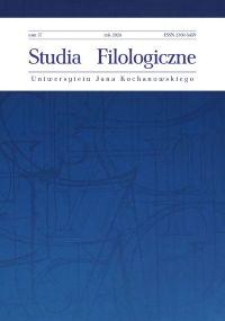Digital Library of the Jan Kochanowski University contains 13 273 digital objects
Object
Title: Structural Features of Lithuanian Blends
Creator:
Group publication title:
Abstract:
The study examines 167 indigenous and translated blends collected in the Database of Lithuanian Neologisms (Miliūnaitė, Aleksaitė) to reveal the heterogenous structure of blends. The phenomenon arises from users’ linguistic sense, their ability to creatively use language resources and their pursuit of the most expressive and economic ways of saying. The study establishes that the phonological (structural) types of syllables in blends correspond to the tendencies of Lithuanian words syllables phonological structure. Often, morphemes from initial words, which lose their morphemic status in blends, are combined. In the process of blending, it is important to aim for the morphemes of the initial words to be recognized as such. Phonemic overlap is used to preserve as many phonemes from initial words as possible. Phonological environment and, in some cases, prosodic features imply the analogy of blends to compounds.
Place of publishing:
ISSN:
Publisher:
Wydawnictwo Uniwersytetu Jana Kochanowskiego w Kielcach
Date issued:
Identifier:
oai:bibliotekacyfrowa.ujk.edu.pl:13571 doi:10.25951/10972
Language:
Is part of:
Studia Filologiczne Uniwersytetu Jana Kochanowskiego
Has part:
Type:
Access rights:
Format:
Object collections:
- JKU Digital Library > University Publishing > Serial publications > „Studia Filologiczne Uniwersytetu Jana Kochanowskiego”
Last modified:
Dec 18, 2025
In our library since:
Dec 18, 2025
Number of object content hits:
3
All available object's versions:
https://bibliotekacyfrowa.ujk.edu.pl/publication/10972
Show description in RDF format:
Show description in OAI-PMH format:
| Edition name | Date |
|---|---|
| Nemickienė Živilė, Navickaitė Eglė, Structural Features of Lithuanian Blends | Dec 18, 2025 |

